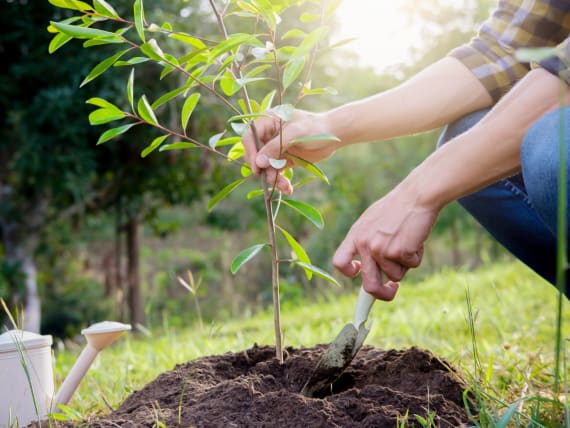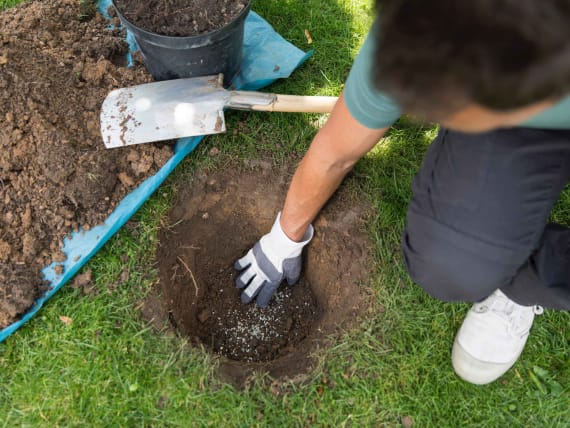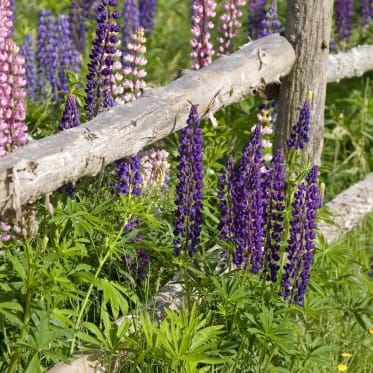Frequent search terms

- COMPO
- Guide
- Plant Care
- Basics
- Planting properly
- Planting properly made easy
Basics
Planting properly made easy
The perfect garden soil is easy to work and exudes a pleasant, earthy scent. The loose mixture of sand, loam and humus also contains many important nutrients, absorbs rainwater and can drain off excess water, creating the foundation for healthy plant growth and colourful floral abundance. Unfortunately, not all garden soils meet these requirements. But with a little coaching you can change that. We show you how to sow new plants in your garden and create a green oasis step by step, regardless of the quality of your soil.

The right time of year to plant
It is best to plant deciduous, coniferous and fruit trees between September and November. At this time, the soil is still warm and offers natural moisture. If you go for the spring planting variety, the following applies: Put plants with root balls into the ground between March and April, and those without balls until the end of May. We recommend fertilising two months after planting to ensure that your plants get enough nutrients. Although you can insert woody plants in containers all year round, the months of March until June are the best time given their moderate temperatures.

Choosing the right soil for your plants
Your plants need a loose, well-aerated soil with a balanced water storage capacity (no waterlogging!) for a good head start to life. So be sure to loosen the compacted topsoil each time you sow a new plant.
When it comes to planting holes, it is a good idea to use a particularly nutrient-rich soil for planting. This also goes for sandy soils. The special soil stores water for longer in the ground and reduces the leaching of nutrients.
Prepare newcomers for planting
To offer your plants optimal conditions for strong growth, two further steps are needed before you get to the actual planting itself:
- Place woody plants without root balls in a bucket filled with water for a few hours before you plant them. You should also dip dry plants with a root ball in water and water plants in containers generously. Plants without root balls are particularly prone to drying out and need to be watered thoroughly before being planted.
- Prune all damaged and kinked roots of woody plants without root balls with a sharp pair of garden shears by a few centimetres. This will allow the white fibrous roots, which are important for absorbing nutrients, to develop better later on.

Give your plants a new home: planting
When planting with root balls, the diameter of the hole that you dig should be at least twice as big as the balls themselves. Loosen the ground area of the plant hole down to the depth of a spade, if possible, and incorporate the first layer of potting soil. Then mix the dug up top soil with soil (one part topsoil to two parts soil) and fill up. If you want to speed up the growth of your plant, you can add products to strengthen the root system to the soil.
The following applies for plants without root balls: Loosely fill the hole with the prepared soil and keep the plant a few centimetres above it. Jiggle the plant a little up and down so that the soil sits evenly around the roots. Following that, tread down the earth surrounding it.
Supporting plants from the outset
Young trees, as well as tall and large shrubs often need extra support while growing. So, tie the plants to a cane placed vertically in the soil from the outset.
Optimal watering
Make a rim to allow for watering about 10 cm tall around the dug hole. This will ensure that your plants have the best-possible water supply. After planting it is important that you water thoroughly to close the hollow spaces between the soil and roots.
You might also be interested in these topics
These soils are suitable for your project















